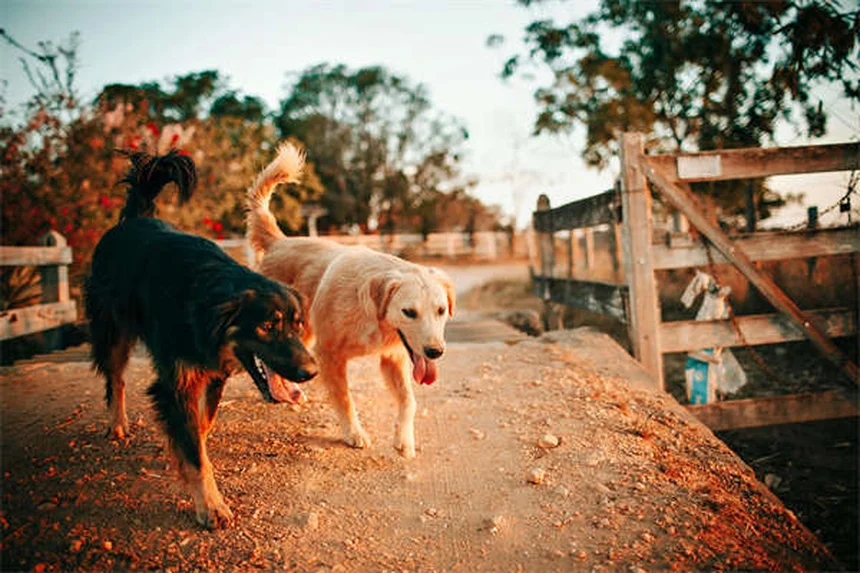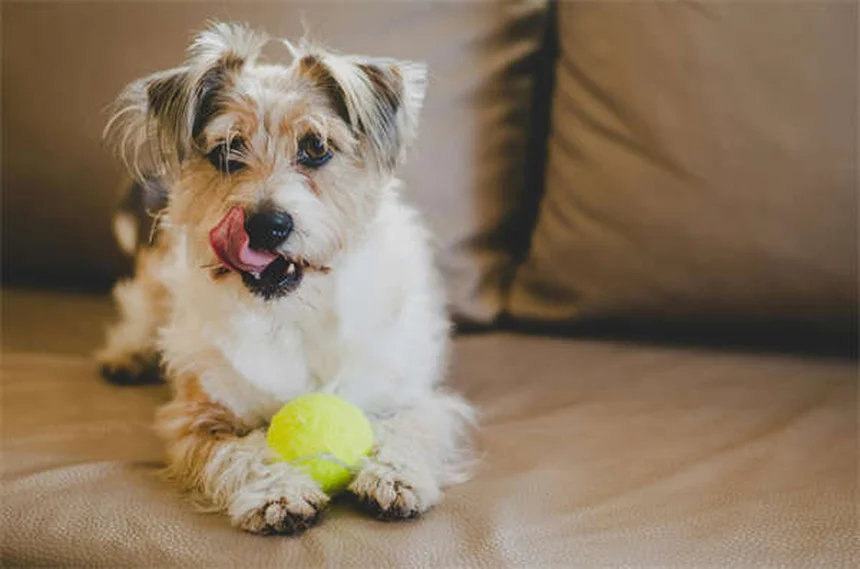Bringing home a new puppy? Here's the deal - those first few weeks are absolutely crucial for setting your pup up for success. I've been through this countless times with clients, and let me tell you, getting the basics right from day one makes all the difference. The key is creating positive experiences with vet visits, proper socialization, and consistent training. Fear Free-certified vets and AAHA-accredited clinics should be at the top of your list - they know how to make vet trips stress-free for your little furball. And don't even get me started on teething! We'll show you how to survive the chewing phase without losing your favorite shoes. Stick with me, and I'll walk you through everything you need to know about puppy development, behavior, nutrition, and training to raise a happy, well-adjusted dog.
E.g. :Rabbit Runny Nose: Causes, Symptoms & Treatment (Vet Approved)
Let me tell you, choosing the right vet clinic is like picking a pediatrician for your kid. You want someone who'll be there through thick and thin. Look for clinics with Fear Free-certified staff - these folks really know how to keep your pup calm during visits. And hey, if they're accredited by the American Animal Hospital Association (AAHA), that's like the gold standard in vet care!
Did you know that first vet visits can shape your puppy's attitude toward healthcare for life? That's why we want positive experiences right from the start. I always recommend scheduling a "happy visit" where your pup just gets treats and pets - no needles!
Before your furball comes home, you'll need to grab some basics. Here's what I've found works best:
| Essential Item | Why It's Important |
|---|---|
| ID tags | Because puppies are escape artists! |
| Quality leash | No retractable leashes for babies, please |
| Sturdy food bowls | Stainless steel beats plastic any day |
Pro tip: Get a crate that'll fit your pup's adult size - it's cheaper than buying multiple crates as they grow. Just use dividers when they're small.
 Photos provided by pixabay
Photos provided by pixabay
Oh boy, here comes the chewing! Between 8-12 weeks, your puppy's mouth becomes a demolition crew. But here's the thing - this is completely normal. Those baby teeth are making way for adult chompers, and it's our job to guide them toward appropriate chewing.
Want to know my favorite trick? The thumbnail test. If you can't press your thumbnail into it, it's too hard for puppy teeth. Stick with soft rubber toys and frozen washcloths - your furniture will thank you!
Ever wonder why puppies seem to forget every rule you teach them? Their brains are like sponges, but they soak up everything - good and bad. That's why consistency is key during this phase.
Here's what works for me:- Redirect chewing to approved toys- Use high-value treats for good behavior- Keep training sessions short (5 minutes max)- Always end on a positive note
Why do puppies think our fingers are chew toys? Simple - it's how they explore the world! But we need to teach them human skin is off-limits. When those needle teeth grab you, try a dramatic "OUCH!" and immediately offer a toy instead.
Remember, punishment doesn't work with puppies. Positive reinforcement is the name of the game. When they chew the right thing, throw a puppy party with treats and praise!
 Photos provided by pixabay
Photos provided by pixabay
Between 8-10 weeks, puppies go through a critical fear period. This is when negative experiences can leave lasting marks. But it's also the perfect window for positive exposure.
Try this socialization checklist:- Introduce new surfaces (grass, tile, gravel)- Meet friendly, vaccinated dogs- Experience different sounds (TV, vacuum, traffic)- Handle paws, ears, and mouth daily
Not all puppy foods are created equal! Look for the AAFCO statement on the bag - this means it meets nutritional standards. Small breeds need more calories than large breeds, so choose accordingly.
How often should you feed? Three to four small meals works best for most puppies. But here's a pro tip: Use meal times as training opportunities! Those kibble pieces make perfect low-calorie treats.
Switching foods too fast can upset tiny tummies. Mix the new food with the old over 7-10 days, increasing the ratio gradually. Watch for loose stools - that's your sign to slow down the transition.
 Photos provided by pixabay
Photos provided by pixabay
Who says training has to be boring? Turn it into a game! Hide treats for "find it," use toys as rewards, and keep sessions upbeat. Puppies learn best when they're having fun.
Start with these basics:- Name recognition (say name, treat when they look)- Sit (use a treat to lure into position)- Come (always reward with high-value treats)
Is crate training really necessary? Absolutely! When done right, the crate becomes your pup's safe space. Start slow - feed meals near the crate, then inside with the door open. Gradually work up to closing the door for short periods.
Remember: Never use the crate as punishment. We want it to feel like a cozy den, not a time-out spot.
Puppy shots can seem overwhelming, but they're crucial protection. The core vaccines include:- Distemper (DAPP)- Parvovirus- Rabies (required by law)
Your vet might recommend others based on your area and lifestyle. Bordetella (kennel cough) is a must if your pup will be around other dogs.
Fleas, ticks, and worms don't care how cute your puppy is - they'll move in given the chance. Start prevention early with vet-recommended products. Monthly treatments are easier to remember if you tie them to a specific date (like the 1st of each month).
Puppies find trouble in the darndest places! Here's what to watch for:- Electrical cords (tuck them away)- Small objects they could swallow- Toxic plants (lilies are especially dangerous)- Cleaning supplies (store up high)
Get down on puppy level to spot hazards you might miss from adult height. Trust me, it's eye-opening!
Hope for the best, prepare for the worst. Save these numbers in your phone:- Your regular vet- Nearest emergency clinic- ASPCA Poison Control (888-426-4435)
Better safe than sorry when it comes to our furry babies!
Those puppy eyes will melt your heart, but don't spoil them rotten. Balance cuddle time with independent play. A well-adjusted pup knows how to be alone without panicking.
Try this routine:- Morning cuddles- Breakfast puzzle toy- Midday crate time with chew- Evening training session- Bedtime in their own space
We often reward excited behavior without realizing it. Try catching those quiet moments - when your pup settles on their own, quietly drop a treat between their paws. This teaches them calm is rewarding too!
Raising a puppy is equal parts joy and challenge, but every chewed shoe and puddle is worth it. Before you know it, that tiny ball of fluff will be your best friend for life. Enjoy every messy, wonderful moment!
Did you know puppies go through developmental stages just like human babies? Neonatal period (0-2 weeks) is all about warmth and feeding, while the transitional period (2-4 weeks) brings eye-opening moments - literally! By understanding these phases, you can better support your pup's growth.
Here's something fascinating - puppies develop their sense of smell before vision. That's why they sniff everything in sight! Their noses contain up to 300 million scent receptors compared to our measly 5 million. No wonder they can find that treat you "hid" under the couch cushion!
Not all puppies are created equal when it comes to care needs. That tiny Chihuahua? Might need sweaters in winter. That energetic Border Collie? Better clear your schedule for training sessions!
| Breed Type | Special Considerations | Fun Fact |
|---|---|---|
| Small Breeds | Prone to dental issues, need frequent meals | Chihuahuas are born with soft spots like human babies |
| Large Breeds | Need controlled growth to protect joints | Great Dane puppies grow about 1 pound per day! |
| Working Breeds | Require mental stimulation and jobs to do | Australian Shepherds often "herd" children instinctively |
Ever wonder why some puppies seem smarter than others? While all dogs are clever, breeds like Poodles and Border Collies consistently rank highest in canine intelligence tests. But don't let that fool you - even "less intelligent" breeds can outsmart us when food's involved!
Why limit training to just sit and stay? Scent games tap into your puppy's natural abilities and provide fantastic mental exercise. Start simple - hide treats in cardboard boxes and let your pup sniff them out. As they improve, you can graduate to more challenging searches.
Here's a cool fact: Dogs can detect odors at concentrations nearly 100 million times lower than humans can. That's like smelling one rotten apple in two million barrels! No wonder they make such amazing detection dogs.
Puppy agility isn't just for show dogs! Creating mini obstacle courses at home builds coordination and confidence. Use household items like broomsticks (for jumps), blankets (for tunnels), and cushions (for balance). Keep it low and safe for growing joints.
Did you know that confidence-building exercises can prevent fearfulness later in life? Puppies who regularly experience new challenges in positive ways tend to become more adaptable adults. Plus, it's hilarious watching them figure out how to navigate your makeshift course!
That wagging tail doesn't always mean happiness! The position and speed tell different stories. A high, stiff wag often signals alertness or potential aggression, while a low, loose wag usually indicates relaxation. And that helicopter tail? That's pure puppy joy!
Here's something wild - dogs wag their tails to the right when happy and to the left when anxious. Scientists believe this relates to brain hemisphere activation, just like how humans use different sides of their brains for different emotions.
Puppy ears are like emotional satellite dishes! Pricked forward means interest, while flattened back often signals fear. Those adorable cocked ears? That's your pup trying to figure something out.
Ever notice how some breeds have more expressive ears than others? Floppy-eared dogs like Basset Hounds actually have fewer facial expressions than prick-eared breeds. But they make up for it with those soulful eyes that could melt an iceberg!
Is raw feeding right for your puppy? While some swear by its benefits, others worry about bacterial risks. If you're considering this route, consult your vet first - puppies have different nutritional needs than adult dogs.
Here's an interesting tidbit: Some studies suggest dogs evolved to digest starch better than wolves, thanks to thousands of years living with humans. That's why many dogs do well on high-quality kibble despite their carnivorous reputation.
When do puppies need supplements? Generally, a balanced commercial diet provides everything they need. But some situations might call for extras:
- Large breed pups often benefit from glucosamine for joint health- Fish oil can support brain development- Probiotics may help after antibiotic treatment
Remember, more isn't always better! Over-supplementing can cause serious health issues. Always check with your vet before adding anything to your pup's diet.
Why stop at basic socialization? Teaching puppies to accept handling prepares them for vet visits and grooming. Practice touching their paws, looking in their ears, and gently holding their muzzle. Pair each touch with treats to create positive associations.
Here's a pro tip: Use different textures during handling exercises - soft brushes, rubber gloves, even feathers! This helps puppies become comfortable with various sensations they'll encounter throughout life.
Think beyond people and dogs! Well-socialized puppies should experience:
- Different floor surfaces (metal grates, slippery tiles)- Unusual noises (thunder recordings, fireworks sounds)- Various types of transportation (elevators, cars)- People wearing hats, uniforms, or using mobility aids
The key? Keep it positive and go at your puppy's pace. Forced exposure can backfire, creating fear instead of confidence.
Puppies thrive on predictability! Consistent schedules for feeding, potty breaks, and sleep help them feel secure. Try to maintain similar wake-up times even on weekends - your pup's internal clock doesn't know it's Saturday!
Ever notice how puppies seem to tell time? They actually develop time-place associations, linking certain activities with specific times and locations. That's why they start getting antsy right before dinner time - they've learned the pattern!
Why does your confident puppy suddenly become scared of harmless things? They're likely hitting a fear period - temporary phases of increased sensitivity. Handle these carefully - forced exposure can cement fears, while gentle support builds resilience.
Here's something reassuring: Most fear periods pass within 2-3 weeks if handled properly. Your job is to provide comfort without reinforcing the fear. Distraction with happy activities often works better than coddling.
Who says fetch is the only game in town? Try these creative bonding activities:
- "Find me" games (hide and call your puppy)- Tug with rules (teach "drop it" as part of play)- Bubble chasing (use pet-safe bubbles)- Nose work games (hide treats in muffin tins under tennis balls)
The best part? These games exercise both body and mind, leading to a happily tired pup. And isn't that what we all want after a long day?
Why limit training to your living room? Take lessons on the road! Practice sits at the park, stays at outdoor cafes, and recalls in safe open spaces. Real-world training builds reliability faster than perfect practice at home.
Here's a fun challenge: Try teaching your puppy one new trick in an unusual location each week. The change of scenery keeps their brain engaged and strengthens your connection through shared experiences.
E.g. :New Puppy Care: 8-12 Weeks | PetMD
A: Choosing the right vet is one of the most important decisions you'll make for your puppy. Look for clinics with Fear Free-certified professionals - these folks specialize in reducing stress during visits. I always recommend AAHA-accredited hospitals because they meet the highest standards in veterinary care. Schedule a "meet and greet" visit before vaccinations start - this lets your pup associate the clinic with positive experiences (think treats and pets, not needles!). Ask about their puppy socialization programs and if they offer behavioral counseling. Remember, you'll be seeing these folks regularly for the next 15+ years, so take your time finding the right fit!
A: Oh boy, those needle teeth! Here's what works: when your puppy nips, say "OUCH!" in a high-pitched voice (like another puppy would yelp), then immediately redirect to an appropriate chew toy. Consistency is key - everyone in the household needs to follow the same approach. I recommend keeping soft rubber toys handy at all times during this phase. Never punish your pup for mouthing - it's completely normal behavior. Instead, reward calm behavior with treats and praise. Most puppies outgrow excessive nipping by 6 months if you're consistent with training. Pro tip: tired puppies bite less, so make sure yours gets plenty of naps!
A: At 8 weeks, your puppy's tummy is tiny but their energy needs are huge! I recommend three to four small meals spaced evenly throughout the day. Stick with an AAFCO-approved puppy food formulated for your dog's expected adult size (small, medium, or large breed). Use mealtimes as training opportunities - hand-feed portions to reinforce good behavior. Always have fresh water available, but monitor intake to help with potty training. Around 4-6 months, you can gradually reduce to two meals daily. Every puppy is different though, so check with your vet about the ideal schedule and portion sizes for your specific pup.
A: Core vaccines are non-negotiable for puppy health. These include: Distemper (DAPP), Parvovirus, and Rabies (required by law). Your pup will need a series of shots every 3-4 weeks until about 16 weeks old. Non-core vaccines depend on lifestyle - if your dog will be around other pups (daycare, parks), Bordetella is a must. Leptospirosis is important if you live near water. Your vet may also recommend Lyme or Canine Influenza based on local risks. Never skip boosters - incomplete vaccination leaves puppies vulnerable to deadly diseases. Keep records in your phone for easy access!
A: Crate training done right creates a safe haven for your pup. Start by feeding meals near the crate, then gradually move the bowl inside. Use treats to encourage exploration - toss them in and let your puppy go in/out freely. Never force them inside or use the crate for punishment. Keep initial sessions short (5-10 minutes) while you're home. A cozy blanket and chew toy make it inviting. Many puppies do well with a cover over the crate (like a den) and white noise. Remember - crying at first is normal, but never leave a distressed puppy crated for hours. With patience, most pups learn to love their crate within a few weeks!
Recommended
Rabbit Runny Nose: Causes, Symptoms & Treatment (Vet Approved)
Essential Cat Vaccines: Core Shots Every Pet Parent Should Know
Why Do Dogs Sleep So Much? 7 Surprising Reasons Explained
Why Do Dogs Do the "I Love You" Stretch? 5 Adorable Reasons
Holland Lop Care Guide: 7 Essential Tips for Happy, Healthy Bunnies